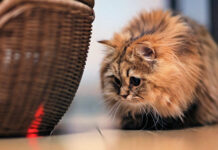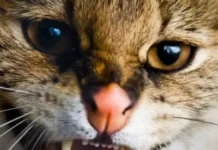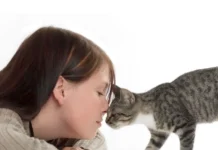Understanding Cat Trilling: A Unique Form of Feline Communication
Cats are enigmatic creatures that captivate us with their myriad vocalizations. Among these various sounds, cat trilling is particularly noteworthy, serving as a distinct and charming form of communication. This article explores the significance of trilling in feline interactions, offering insights that can help cat owners forge deeper connections with their pets.
The Origins of Cat Trilling
The term “trilling” comes from Old English, derived from the Middle English word “trillen,” which means to vibrate or quiver. In contemporary terms, trilling often describes a musical technique characterized by the rapid alternation of two adjacent notes, producing a fluttering sound. It also refers to sounds made by various animals, including cats, birds, and even dolphins.
Picture cat trilling as a melodious opera of sorts – where whiskers meet Wagner and purrs resonate with Puccini in a delightful symphony of sounds.
Why Do Cats Trill?
Understanding why cats trill offers valuable insights into their emotional states and behavioral patterns. Here are some common reasons behind this unique vocalization:
- Affection and Greeting: Cats often trill to express affection and greet their owners or fellow felines. This warm vocalization typically accompanies behaviors like purring and rubbing against legs, signaling happiness and a desire for interaction.
- Request for Attention: Trilling can indicate that a cat is seeking attention or wants to initiate interaction. A cat may trill while looking at you or moving closer, signaling their desire to play or cuddle.
- Communication Among Cats: Within multi-cat households or social groups, trilling serves as a friendly means of communication, fostering social bonds and encouraging play.
- Happiness or Contentment: Cats frequently trill when they feel happy or relaxed. This gentle sound may occur during moments of contentment, such as lounging in the sun or receiving affection.
How Do Cats Trill?
The creation of a cat’s trill involves a complex combination of vocalization techniques and mouth movements. Though not wholly understood, the process is believed to involve:
- Vocalization: The trill begins with the vibration of the cat’s vocal cords. Cats possess a specialized larynx that enables a wide range of vocal expressions, including trills.
- Mouth Movements: Alongside vocalization, cats modulate the sound of their trills through rapid mouth movements, often accompanied by a fluttering action of the tongue.
- Breath Control: Effective breath control allows cats to regulate airflow, adjusting pitch and intensity to convey a variety of emotions.
When Do Cats Trill?
Cat trilling can occur in numerous social contexts. Here are five common scenarios in which cats might trill:
- Greeting: Cats often trill as a friendly hello, whether upon your return home or when greeting another cat.
- Affection: During cuddle sessions or when receiving petting, a cat’s trill can be a sweet expression of love and bonding.
- Request for Attention: A cat may trill to catch their human’s attention, signaling a desire for interaction or play.
- Playtime: Trilling frequently accompanies playful behavior, enhancing their excitement during games with toys or other cats.
- Comfort and Contentment: Cats may trill when they are relaxed or happy, conveying their satisfaction in peaceful situations.
Conclusion: Embracing the Language of Your Cat
In summary, cat trilling serves as a vital component of feline communication, reflecting diverse emotions and social intentions. Understanding the nuances of this melodic expression allows cat owners to strengthen their bond with their furry companions and enhance their pet’s quality of life. The next time your cat graces you with a beautiful trill, take a moment to appreciate this unique form of interaction and cherish the connection you share with your beloved pet.












